
十月诞生石:探索蛋白石和碧玺
十月出生的人有两种传统的诞生石:碧玺和蛋白石。这两种独特的宝石都拥有美丽多样的色彩和光学效果。
与九月一样,十月(Octo)的名称源于拉丁语octo ,意为“八”,源于它在为期十个月的早期罗马历法中的原始位置。盎格鲁-撒克逊人将十月称为Winterfylleth ,意为“冬季满月”,因为他们认为冬季始于十月的满月。
罗马十月的一个有趣的节日是Mundus Patet ,在这一天,生者和死者的世界相互开放。
如今,亡灵节、万圣节等类似的节日都在十月庆祝。十月象征着圆满、收获和生命的轮回。
让我们看看这些象征意义是否与十月诞生石相符!今天,我们将详细了解碧玺和蛋白石作为十月诞生石的历史、特性、含义和用途。
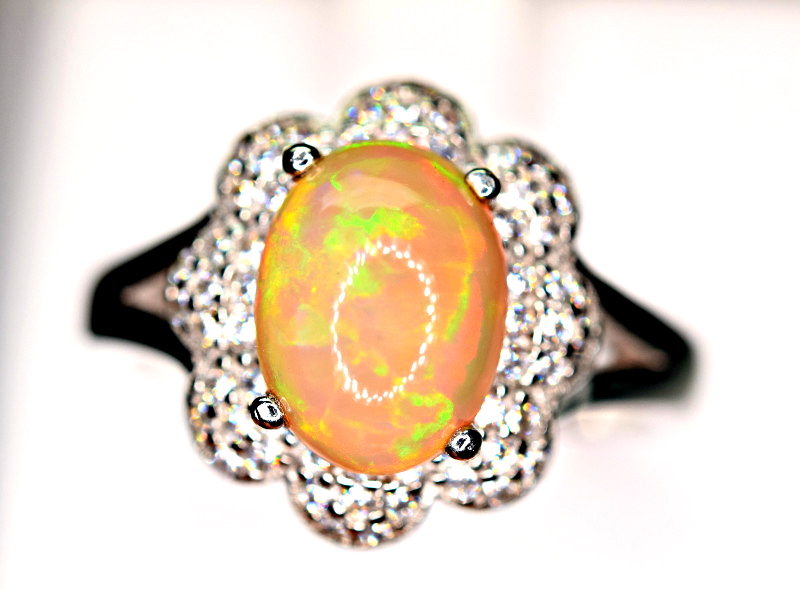 上图:珍贵的蛋白石戒指
上图:珍贵的蛋白石戒指
十月诞生石的历史和文化意义
十月的官方诞生石是什么?有两种官方半宝石被指定为十月诞生石:蛋白石和碧玺。
但为什么十月诞生石有两种呢?嗯,并非一开始就只有两种。
第一份诞生石清单创建于公元 1 世纪至 5 世纪,灵感来自圣经中的宝石清单,其中十月的诞生石是绿柱石(或具体为海蓝宝石)。
现代正式名单始于 1870 年,当时蒂芙尼公司出版了一本名为《格里高利诞生石诗歌》的小册子。十月的诗歌是关于蛋白石的。
第一份标准化清单由美国珠宝商协会 (现为美国珠宝商协会) 于 1912 年发布,该协会指定蛋白石为十月诞生石,并以电气石作为替代。
20 世纪 50 年代,美国珠宝行业委员会修改了 1912 年的名单,特别指定粉红碧玺为十月替代品。
最新的2016年美国名单将蛋白石和粉红碧玺列为10月份的优先宝石。而2013年英国的名单上只有蛋白石。
令人惊讶的是,这两颗纪念“黑暗而恐怖”的十月的宝石很大程度上源于与彩虹相关的传说。
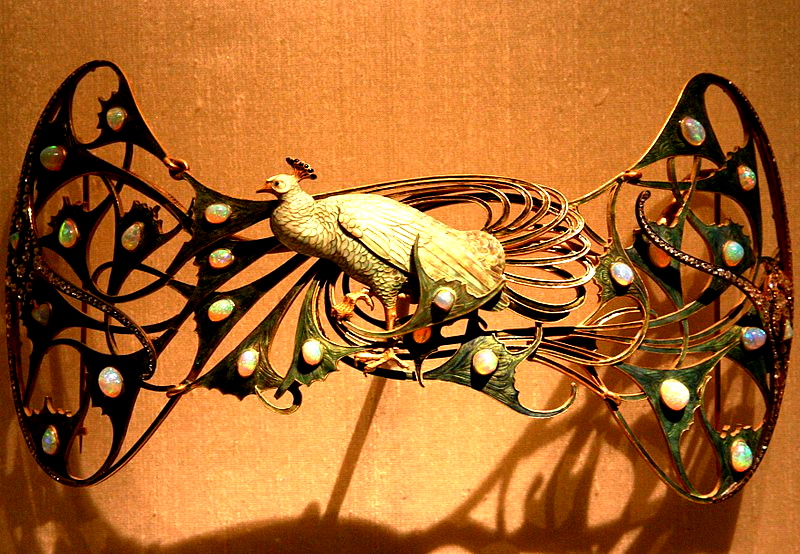 上图:René Lalique (1860-1945); “孔雀”胸花装饰品,约 1898-1900 年,镶有黄金、蛋白石、钻石和珐琅;卡洛斯特·古尔本基安博物馆 |图片来源:© José Luiz Bernardes Ribeiro / CC BY-SA 3.0
上图:René Lalique (1860-1945); “孔雀”胸花装饰品,约 1898-1900 年,镶有黄金、蛋白石、钻石和珐琅;卡洛斯特·古尔本基安博物馆 |图片来源:© José Luiz Bernardes Ribeiro / CC BY-SA 3.0
蛋白石的神话起源和古代民间传说
古希腊人相信蛋白石是由天神宙斯击败泰坦巨人后流下的喜悦的泪水形成的。
古罗马人视蛋白石为宝石之王。罗马学者老普林尼曾写道,蛋白石兼具红宝石、祖母绿和紫水晶等珍贵宝石的所有优良品质。
澳大利亚土著(有时称为“原住民”)的蛋白石传说可以追溯到几个世纪以前。
关于蛋白石起源的一个神话与彩虹蛇有关,彩虹蛇是一种在水坑之间飞行的强大生物,它闪着彩虹色的鳞片落到地上就变成了蛋白石。
另一个关于澳大利亚蛋白石起源的神话说,祖先的造物主灵魂通过彩虹来到地球,他们的脚接触地面的地方就出现了蛋白石。
古印度神话中说,母神将彩虹圣母变成了蛋白石,以帮助她逃脱多个神灵的追捕。
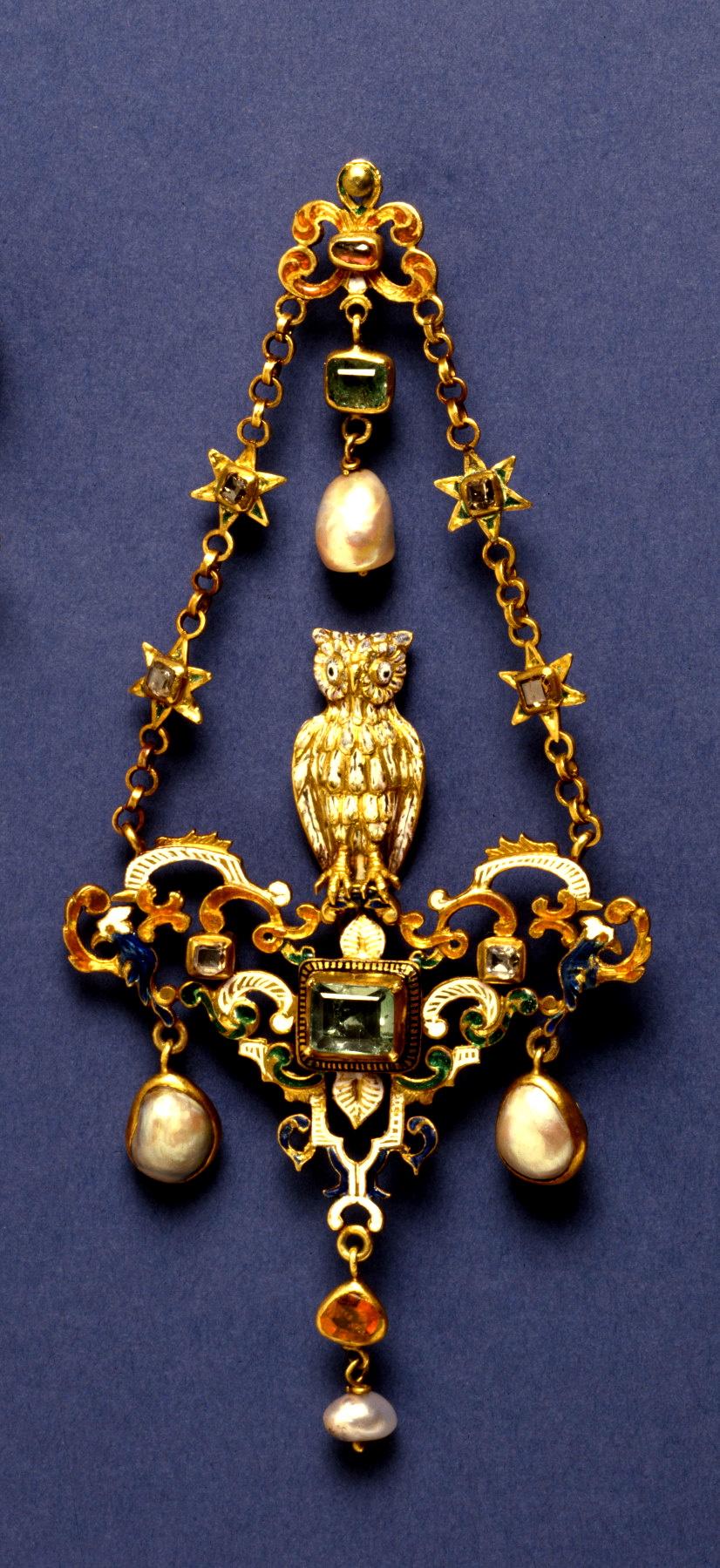 上图:金色猫头鹰吊坠,镶嵌碧玺、红宝石、钻石和珍珠;可追溯至 19 世纪,此前认为是 16 世纪的作品;现藏于沃尔特斯艺术博物馆 | 图片来源:沃尔特斯艺术博物馆,公共领域
上图:金色猫头鹰吊坠,镶嵌碧玺、红宝石、钻石和珍珠;可追溯至 19 世纪,此前认为是 16 世纪的作品;现藏于沃尔特斯艺术博物馆 | 图片来源:沃尔特斯艺术博物馆,公共领域
碧玺的多元历史渊源
碧玺的历史比蛋白石略短,但同样令人着迷。
这种十月生日石的名字源自斯里兰卡语 turmali,意为“混合宝石”。荷兰商人为斯里兰卡宝石包裹中的彩色宝石创造了这个名字。
荷兰对“schorl”(黑色电气石)的贸易至少可以追溯到 15 世纪,甚至更早。
历史上另一次发现碧玺是在 1554 年。西班牙征服者弗朗西斯科·斯宾诺莎在巴西发现了一种绿色碧玺,他将其命名为“巴西祖母绿”。
另一个值得注意的碧玺误认案例是“凯撒红宝石”,这颗红色宝石的历史可以追溯到16世纪,在法国和俄罗斯皇室中流传。20世纪20年代,它被发现是一颗红碧玺。
事实上,在 1785 年对第一颗碧玺(schorl)进行分析之前,商人很可能一直将彩色碧玺称为其他宝石。直到 1808 年发现硼之后,该宝石才被完全认可。
1892 年,加利福尼亚州发现了碧玺,此后,该州的大部分粉色碧玺都被卖给了中国慈禧太后,她对这种宝石十分喜爱。
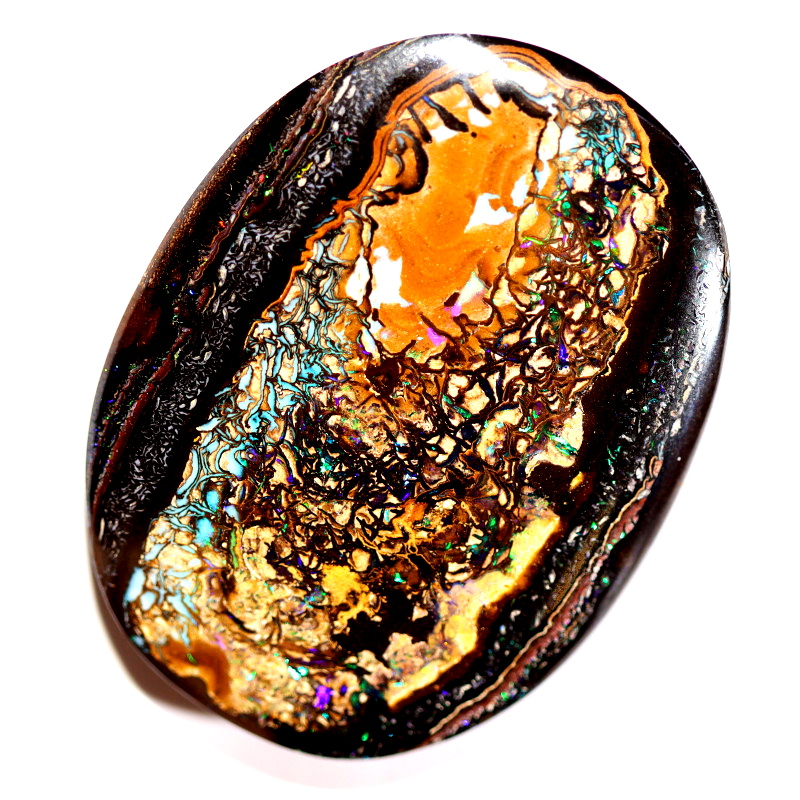 上图:抛光矩阵蛋白石
上图:抛光矩阵蛋白石
地质奇迹:蛋白石和碧玺的形成
从蛋白石开始,这些宝石是无定形矿物,缺乏晶体结构。它们由二氧化硅和不同含量的水分组成。
当含有溶解二氧化硅的水沉淀到类似铁矿石裂隙或流纹晶洞(“雷蛋”)的区域时,就会形成蛋白石。当水分蒸发后,凝胶凝固成蛋白石。
这种宝石也可以在古代海洋生物(例如蛋白石箭石)或木材等化石周围形成。
但蛋白石也是一种太空宝石!2015年和2023年,火星上都发现了蛋白石,证明火星上存在水。
十月诞生石碧玺的形成有些类似。
在极深、高温的热液矿床中,含有溶解的硼和二氧化硅的水沉淀到岩浆裂缝中,形成了电气石。岩浆逐渐硬化成岩石,水分蒸发,元素结晶。
采矿地点
世界上约 95% 的珍贵蛋白石产自澳大利亚。
大多数碧玺宝石产自巴西或非洲国家。美国加利福尼亚州以粉红色碧玺而闻名。
 上图:常见的橙色火蛋白石,多面体
上图:常见的橙色火蛋白石,多面体
 上图:产自澳大利亚闪电岭的珍贵蛋白石,呈现出鲜艳的色彩
上图:产自澳大利亚闪电岭的珍贵蛋白石,呈现出鲜艳的色彩
蛋白石的缤纷色彩:揭开其内在的魔力
最广泛的蛋白石类别是普通蛋白石与珍贵蛋白石。
十月生日石蛋白石的成分是由被水包围的二氧化硅球体组成的。如果这些球体排列混乱、大小不均,就会形成普通蛋白石。大小均匀、排列整齐的球体(如巴基球)则会形成珍贵的蛋白石。
只有“珍贵蛋白石”才会呈现色彩变幻,其表面会闪烁着彩虹般的色彩。
注意:一些宝石学家将“变彩”与“乳光”同义使用。另一些人则将乳光定义为一些常见蛋白石的乳白色或近乎珍珠的外观。
不同类型的蛋白石主要根据其体色(背景色)、透明度和色彩变化进行分类。
蛋白石的体色主要有白蛋白石、灰蛋白石和黑蛋白石。这些体色可以通过体色图表来区分。
具有其他体色的蛋白石包括:
无色蛋白石的种类包括水晶蛋白石、水晶蛋白石和果冻蛋白石。透明蛋白石可以是无色的。水蛋白石在水中会变成透明无色。
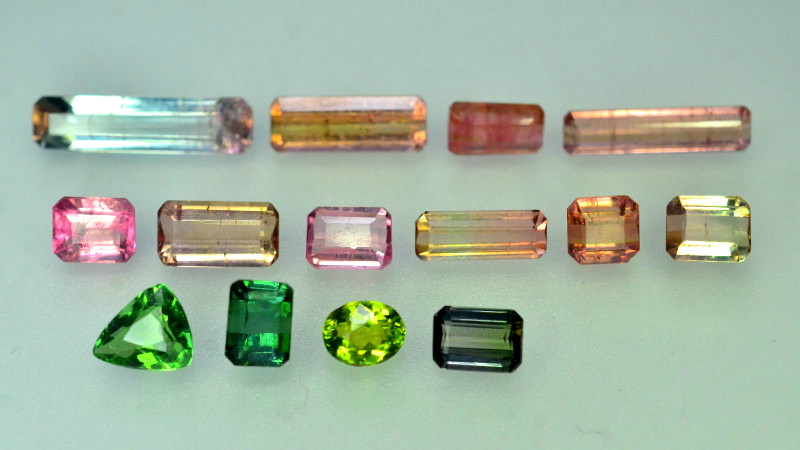 上图:各种颜色和种类的刻面碧玺
上图:各种颜色和种类的刻面碧玺
碧玺的多种面貌
“电气石”实际上是一个复杂多样的矿物群体,包含 30 多种矿物。最常见的种类包括:
黑碧玺:最常见的品种,约占所有天然碧玺的 95%;颜色从棕色到黑色
镁电气石:比较常见;绰号“棕色电气石”,但也可能呈现其他颜色
锂辉石:最常见的宝石级品种,最知名、最有价值;几乎可以是任何颜色或多色
每个物种都可以产生不同颜色的品种。最常见的碧玺品种如下:
黑色碧玺:唯一的黑碧玺品种;最常见的碧玺;始终不透明
铬碧玺:镁电气石;罕见的鲜绿色
蓝铜矿:锂辉石;主要呈蓝色
帕拉伊巴碧玺:锂电气石;浓郁的霓虹蓝至蓝绿色或紫色
红碧玺:通常为锂碧玺;饱和粉红色至红宝石红色品种,可能带有紫色、棕色或橙色底色
绿宝石:Elbaite;绿色品种,通常被称为“巴西祖母绿”或“锡兰橄榄石”
西瓜碧玺:Elbaite;双色粉色和绿色,通常具有粉红色中心和绿色边缘,有时由无色层隔开
西伯利亚电气石:有时被认为是红碧玺的亚型;绰号“紫色电气石”,但通常呈红紫色或紫红色
粉色碧玺生日石属于锂碧玺类别,通常属于红碧玺或蓝碧玺。多色碧玺包括粉色和绿色西瓜碧玺,以及粉色和橙色“日落碧玺”。
最稀有的碧玺品种是帕拉伊巴碧玺。纯黄色、橙色、蓝色、紫色或变色的碧玺也很罕见。
另一个因素是多色性,碧玺正是因多色性而备受珍视。多色性越强的碧玺价值越高。
说到价值,十月诞生石是如何分级的?
 上图:刻面西瓜碧玺
上图:刻面西瓜碧玺
评估品质:蛋白石和碧玺的特征
碧玺的分级比蛋白石简单得多。下文我们将重点介绍蛋白石和碧玺的标准宝石价值因素——颜色、切工、净度、克拉重量和处理方式。您可以点击此处了解更多关于蛋白石价值分级的信息。
颜色
蛋白石:这些诞生石的主要价值因素在于其颜色(体色)和游彩。最常见的蛋白石体色是白色,其次是灰色和绿色。最稀有的是黑色或红色。总的来说,珍贵蛋白石比普通蛋白石价值更高。
最佳游彩拥有闪烁的红色(或所有颜色),呈现出独特的图案,并覆盖宝石的整个表面。颜色较深的宝石,例如珍贵的黑蛋白石,会呈现出更明亮的游彩,从而提升其价值。
碧玺:最稀有、最珍贵的十月生日石颜色是帕拉伊巴碧玺。黑色、红色和粉红色碧玺更为常见。亮绿色和蓝色的多色性、杂色或变色特性可以提升生日石的价值。
切
蛋白石:蛋白石不像其他宝石那样常被刻面——唯一常见的刻面品种是火蛋白石。你通常会看到蛋白石被切割成凸圆形或珠状。半透明至不透明的蛋白石凸圆形或完全透明的刻面蛋白石呈现出最佳的游彩效果。许多蛋白石凸圆形是复合宝石,例如双层蛋白石或三层蛋白石。
碧玺:碧玺宝石通常经过多面切割,呈长方形。帕拉伊巴碧玺等更珍贵的品种可能会选择明亮式切割。内含物丰富的碧玺通常被制成凸圆形或雕刻品,而双色碧玺则可以进行切片。
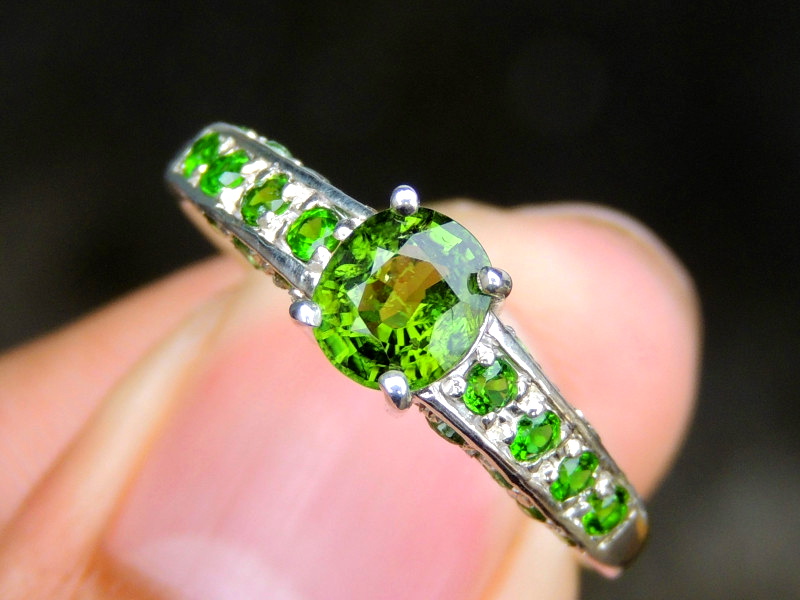 上图:多面镀铬碧玺戒指
上图:多面镀铬碧玺戒指
清晰度和透明度
净度描述了宝石中可见内含物的程度,内含物会降低宝石的透明度和价值。
蛋白石:内含物通常会降低蛋白石的价值。蛋白石周围的一些内含物和附加物质会形成不同的种类,例如树枝状蛋白石、基质蛋白石和砾状蛋白石。
完全透明的蛋白石非常罕见,价值不菲,但黑色蛋白石的不透明度更高。浑浊通常会降低价值。
碧玺:大多数碧玺净度为II型,这意味着预期会有少量可见的内含物。铬碧玺和绿碧玺为I型(通常无内含物),而帕拉伊巴碧玺、红碧玺和西瓜碧玺为III型(始终可见内含物)。
内含物越多,透明度越低,碧玺的价值就越低。唯一能提升价值的内含物是排列整齐的管状结构,从而呈现出猫眼效应。
电气石本身是电气石石英中的内含物。
克拉重量
蛋白石:黑色或水晶蛋白石等稀有蛋白石的每克拉价格可能会以 1-5 克拉、5-10 克拉和 10+ 克拉等间隔波动。
碧玺:碧玺的诞生石大小不一,但5克拉以上的碧玺价格更高。品种也很重要——铬碧玺通常重达5克拉,而帕拉伊巴碧玺很少超过1克拉。
治疗
蛋白石:未经处理的蛋白石比经过处理的蛋白石价值更高,尤其是像黑蛋白石这样的稀有品种。您可以点击此处了解如何检测蛋白石是否经过处理,或者将您的十月生日石送到实验室进行鉴定。
碧玺:处理也会降低碧玺的价值,但这种处理方式在十月生日石中很常见。常见的处理方式(通常是为了改善颜色或净度)包括辐照、加热和/或裂缝填充。
 上图:澳大利亚黑蛋白石吊坠
上图:澳大利亚黑蛋白石吊坠
十月诞生石的含义和文化信仰
十月诞生石的精神含义是什么?除了与彩虹的联系之外,它们各自都有独特的象征意义和神秘特性。
蛋白石的含义
根据古代的解释,蛋白石象征着纯洁、希望和洞察力。罗马人称蛋白石为“丘比特恋童癖”(Cupid Paederos) ,意为“如爱般美丽的孩子”。
尽管19世纪时,蛋白石曾一度被人们视为诅咒之物,但许多古代社会,例如中国,仍然相信蛋白石象征着幸运。一个流传至今的普遍迷信是,任何非十月出生的人佩戴蛋白石都会带来厄运。
作为一种疗愈石,蛋白石的许多功效都与视觉和心灵有关。人们相信,这种十月诞生石的疗愈功效包括治疗视力问题、增强认知能力以及预见未来。
碧玺的含义
总的来说,碧玺十月诞生石象征着同情、开明和宽恕。它有时被称为“和解之石”。
每种颜色的碧玺都有其独特的含义和疗愈功效。这款十月宝石以粉红碧玺为主,据说能够提升能量、促进爱情,并帮助化解感情困扰。
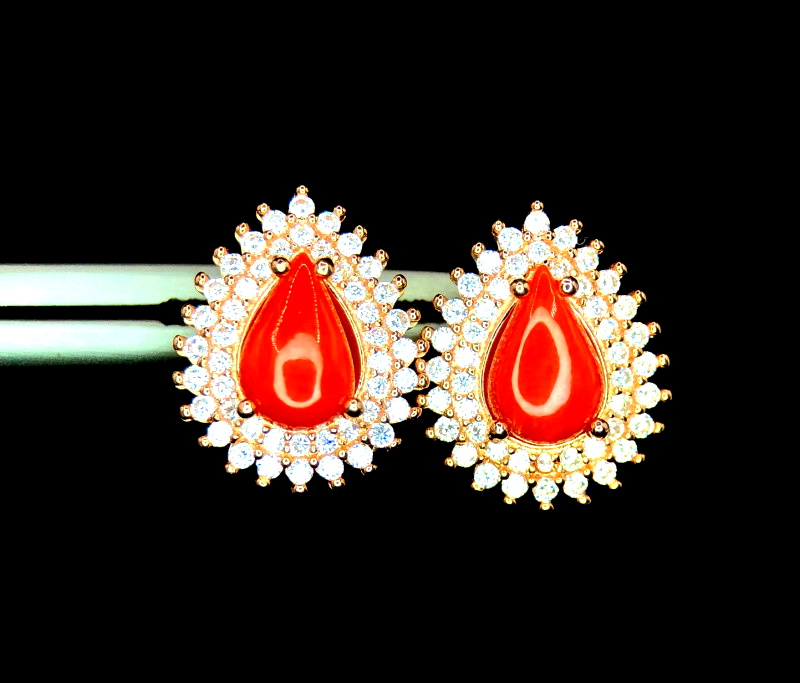 上图:红珊瑚耳环
上图:红珊瑚耳环
其他十月诞生石
十月最受欢迎的诞生石是什么?蛋白石通常是“经典之选”,比碧玺更受欢迎,但还有其他十月诞生石和水晶!
十月诞生石的热门替代品是绿柱石和珊瑚。
从占星术角度来看,天秤座的诞生石是什么?9月出生的天秤座(9月23日之后)可以从橄榄石、玫瑰石英和摩根石中受益。
天蝎座的诞生石有哪些?9月出生的天蝎座(9月23日之前)可以选择黑碧玺、孔雀石和珊瑚。
个性化十月诞生石礼物
你拿到宝石了,现在该怎么用它呢?一份绝佳的十月诞生石礼物,发自内心,为你十月出生的爱人献上祝福。
由于十月是最常见的结婚月份之一,因此十月诞生石戒指也是庆祝的好方法!
您甚至可以获得定制珠宝,例如带有金盏花图案(该月的诞生花)的十月诞生石项链。
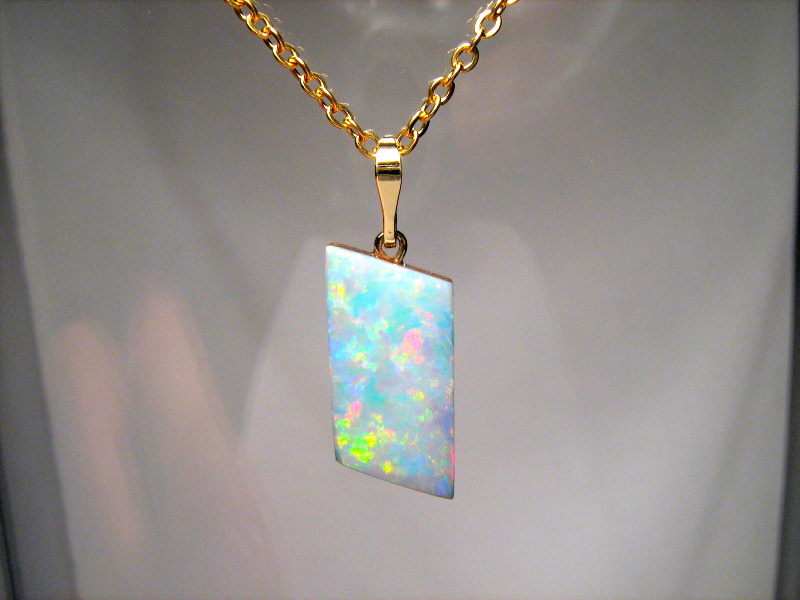 上图:白色珍贵蛋白石吊坠项链
上图:白色珍贵蛋白石吊坠项链
十月诞生石让您欣喜若狂吗?
碧玺和蛋白石都因其丰富的色彩和独特的外观而备受喜爱。您更喜欢最近正式推出的粉红碧玺、更古老的传统蛋白石,还是其他十月生日石?跟随您的心意,选择最适合您的宝石!
搜索Gemstone Encyclopedia
最新的文章
彩虹格纹日光石是一种长石,由于内部含有各种包裹体,呈现出三种绚丽的光学效应。它绚丽多彩的光泽和格纹图案使其成为收藏家梦寐以求的珍宝!
12th Jan 2026
文章分类
How To's is where you will find helpful articles from gem Rock Auctions on how to cut gemstones, select gemstones and buy gemstones.
9文章数
